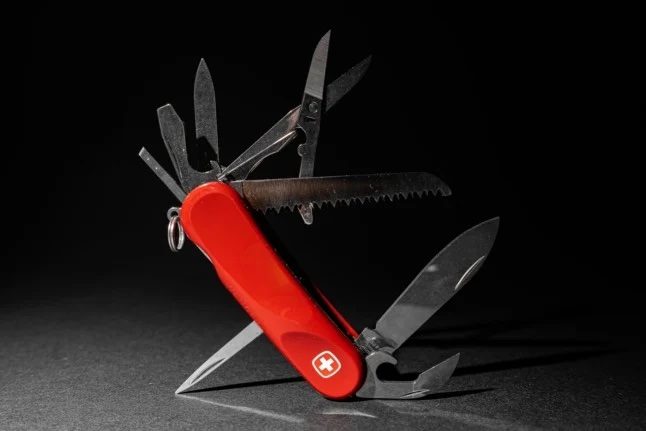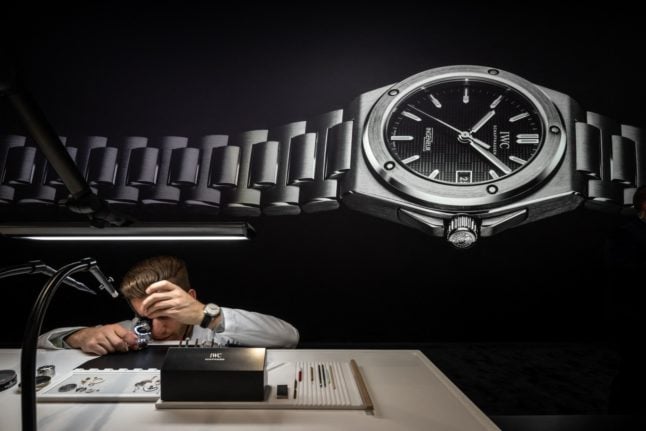The iconic, multi-bladed army knives with a Swiss cross logo are as much part of Switzerland’s image as cheese, chocolate and yodelling.
Looking at the cutting-edge models available today, it may be hard to imagine that when these knives were first issued to Swiss soldiers in 1886, they were very simple — basically just a blade with a black handle.
Swiss cutler Karl Elsener, founder of the Victorinox company, began making more functional knives, equipped with a blade, reamer, can opener and screwdriver, in 1891. By the end of the century, an improved version, the officer’s knife, featured a second blade and corkscrew.
In 1891, the army ordered 15,000 knives to be distributed to its soldiers. At that time, however, Switzerland had no capacity to produce that many pieces and, in what could be considered as an early example of outsourcing, it placed the order with a German manufacturer.
This means that, paradoxically, Swiss knives were made in Germany – just like the quintessential Swiss mountain girl, Heidi.
Soon another cutlery manufacturer, Wenger, was also commissioned by the army to produce the knives, with the contract split evenly between the two.
This has eventually led to a knife-to-knife combat between the two companies, with Victorinox, as its name suggests, being victorious, and taking over its rival in 2005. From 2014, the army knife has been manufactured exclusively under the Victorinox name.
READ MORE: Victorinox cuts Wenger Swiss Army knife brand
What do the soldiers actually use the knives for?
In the early days, the knife’s primary purpose was to help troops perform basic tasks such as cutting string and wires, opening a can of food, as well as assembling and disassembling their service rifles.
To this day, each new recruit receives a basic ‘Soldier’ knife at the beginning of their service. This particular model features a can opener, screwdriver, blade, wood saw, cap lifter, wire stripper, reamer, and key ring — all the accoutrements needed to defend Switzerland.

Although this was not the original intention, most of the hundreds of models of army knives today are used by civilians.
In fact, these once strictly military tools, are now geared toward specific users like campers, fishermen, hunters, handymen and even computer repairmen.
Karl Elsener would no doubt be surprised to discover that his original, no-fuss knife now features a wide variety of modern attachments, such as USB flash drives.
He would also be shocked to find out that Victorinox has branched into decidedly unmilitary products like Swiss Army perfumes, watches, and luggage.
And speaking of the military…
Swiss Army products are separate from a similarly named brand, Swiss Military, which manufactures watches. It is based in Aargau.
Even more so, it is also unrelated to a namesake Swiss Military company, based in…India.
Here is some more information about Switzerland’s army:
Women in Swiss military can finally wear women’s underwear
Swiss army bans WhatsApp due to privacy concerns
No marching orders: Swiss soldiers told to do military training at home



 Please whitelist us to continue reading.
Please whitelist us to continue reading.
Member comments